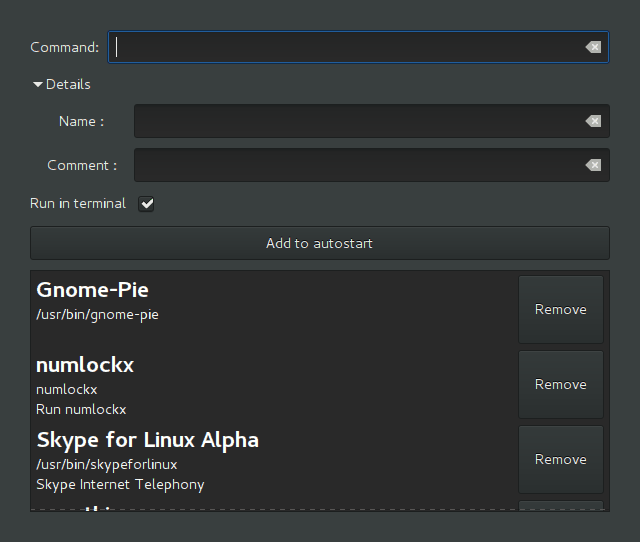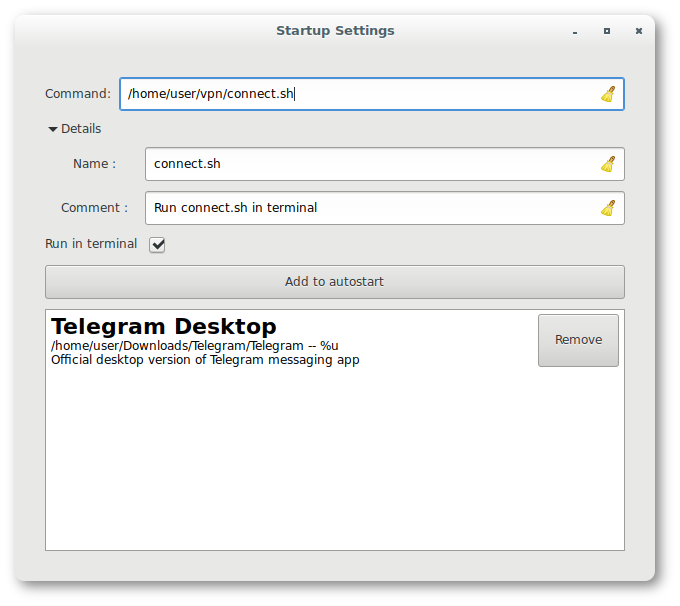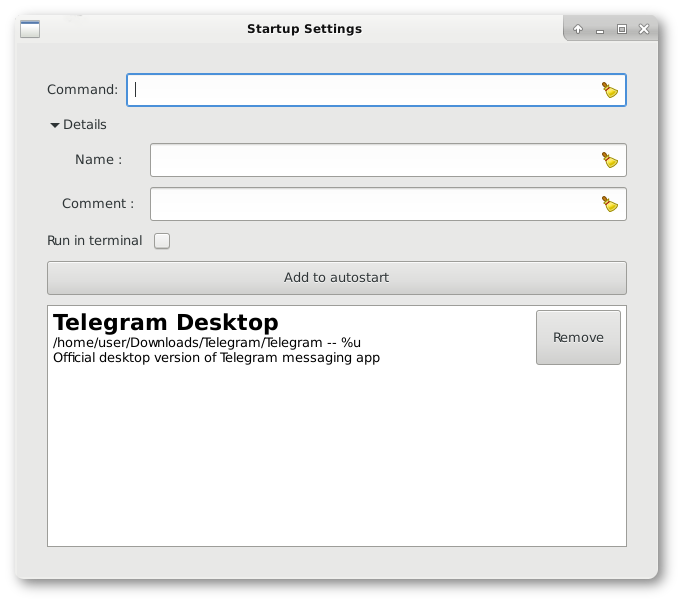There is no handy tool to control startup in GNOME 3. If you want to add a custom command to
startup, you have to create file ~/.config/autostart/file.desktop manually. This
simple program written in C++ and GTK 3 provides user friendly graphical interface for
startup managing. The program is designed especially for GNOME 3, however it can also be
used in any other desktop environment.
Installation
If you are using Debian/Ubuntu, you can install the application from package
For amd64:
wget https://github.com/hant0508/startup-settings/raw/master/debian/startup-settings-amd64.deb
sudo dpkg -i startup-settings-amd64.deb
For i386:
wget https://github.com/hant0508/startup-settings/raw/master/debian/startup-settings-i386.deb
sudo dpkg -i startup-settings-i386.deb
If you've installed the package, you don't need to build the program from source code, go to usage.
Building
- Installing dependencies
Debian/Ubuntu:sudo apt-get install g++ make git libgtk-3-dev
Arch/Manjaro x32:sudo pacman -S gcc git make gtk3
Arch/Manjaro x64:sudo pacman -S gcc-multilib git make gtk3
- Building
git clone https://github.com/hant0508/startup-settings.git
cd startup-settings
make - Installing application
sudo make install
To save the disk space, you can delete all the downloaded files and dependencies after the installation.
Usage
After the installation you can find the program in application menu or run
startup-settings in terminal.
Enter startup command into the Command field. It can be:
- full path to file:
/usr/bin/file.sh - relative path to file in your your home directory:
scripts/file.sh - command from $PATH:
firefox
Depending on the window manager, you can also use drag-and-drop. GNOME 3 allow even drag and drop files.
Screenshots
 |
 |
|---|---|
| Usage on GNOME 3 | Drag and drop on GNOME 3 |
 |
 |
 |
|---|---|---|
| KDE 5 | Cinnamon 3 | XFCE 4 |
Feedback
If you have any problems with the application, open an issue. Write me at email, if you have no GitHub account.